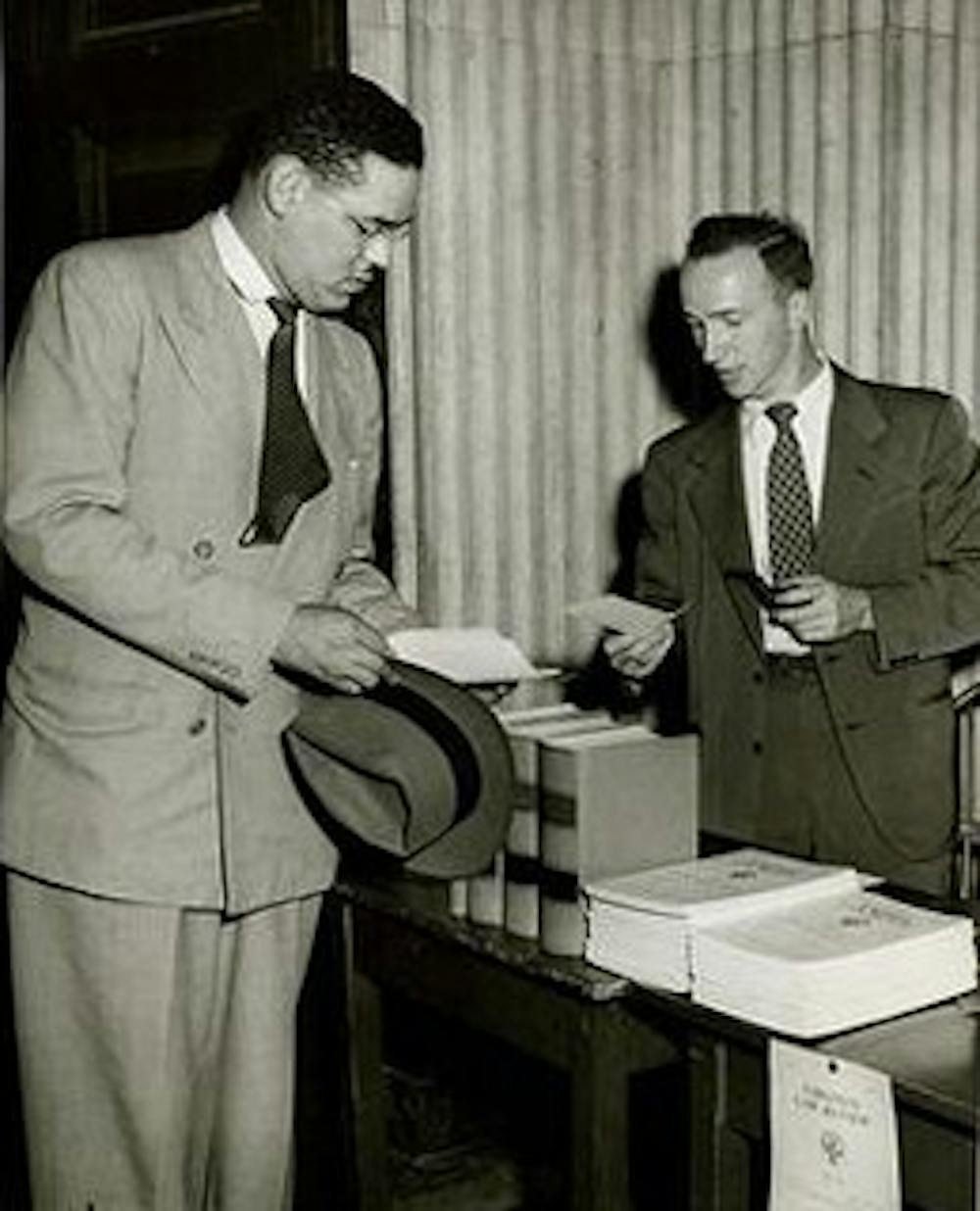On Feb. 5, the University honored the first black student to successfully enroll at the University, law student Gregory H. Swanson. The commemoration was held in the Caplin Pavilion at the Law School and was a part of the University’s Martin Luther King Jr. celebration, which included over two dozen events from Jan. 15 to Feb. 5. The event featured remarks by University Rector Frank M. Conner III, the unveiling of Swanson’s portrait, the presentation of an award in Swanson’s name and the announcement of a new President’s Commission. This commission will focus on the role the University held in the age of segregation. This complements the President’s Commission on Slavery and the University. Like the commission on slavery, this commision may also include a long list of names, local and national advisory boards and chairs that students do not know and will probably never meet. They will likely host a number of conferences and reveal plaques and portraits to hang in hallways and walkways. Perhaps at the end of another month-long celebration, another commission will be announced — all sorts of commemorative events to show that they truly care about exploring the University’s complicated history. These symbolic gestures, however, are not enough if they don’t materialize in the lives of students at the University.
The University has a long history of discrimination and racial tension. Swanson, though celebrated this week, was not initially admitted when he applied in 1949. It was through Swanson’s subsequent legal action resulted in his court-ordered admission to the Law School. This history cannot be forgotten. Swanson and the other few African-American students at the University at this early stage experienced high levels of loneliness, isolation and even racism from their fellow classmates and professors. Fortunately, once African-Americans were admitted regularly as students, they, along with their white allies, pushed for the University to admit more African-American students, hire black faculty, raise the minimum wage of workers, create a department of African-American and African Studies and even to admit women as students.
Yet, nearly 70 years after Swanson was denied entry to the University, African-Americans are still experiencing forms of discrimination on Grounds. Yes, there have been numerous conferences, events and town hall meetings, commissions, panels and commemorations in the name of historical figures, diversity and increased inclusivity — several occurring during my time here as a student. But I have also witnessed Martese Johnson getting slammed into concrete on the Corner, cowardly hecklers using Yik Yak as a forum to demean and degrade black peaceful protesters, racially charged language being left on the doors of first year dorms, rising tuition, a University lecturer comparing the #BlackLivesMatter movement to the racism of the Ku Klux Klan, and, more recently, neo-Nazis and white supremacists marching into the heart of the University with fire-lit torches. These events serve as constant reminders that people of color do not belong at the University.
What good is a commission on segregation when students still feel unwelcome in certain spaces on Grounds? What good are portraits of trailblazers like Swanson when there are qualified students who can’t afford to go here? There is little use celebrating the past when the present doesn’t look much different. There is no use spending funds on events and commissions for the sake of commemoration when the grandchildren or great-grandchildren of Swanson can come to these Grounds and never have a black professor, feel lonely and isolated, be fed and cleaned up after by workers who don’t make a living wage and deal with discrimination at the hands of their fellow students and professors. All of these commemorative acts function as publicity stunts — any action of the University needs to be tangible to mean anything.
The University needs to have a commission on the ways in which racism and discrimination still exist in the lives of its students. This commission could take the form of an event focusing on what resources African-American students and faculty need in certain instances ranging from incidents like Aug. 11 and 12 to the daily microaggressions they face on the bus, in the classroom or at the Student Council meetings. It could come in the form of more scholarships and grants for students that come from low-income backgrounds. It could also take the form of search committees that work to bring the best black faculty from around the country to our classrooms. A conference is not enough. A painting is not enough. A commission may look like enough, but it is not. What students need from the University are tangible restitutions for the past that can transform the lives of those who are currently here and those who will walk these Grounds in the future.
Zari Taylor is a Viewpoint columnist for The Cavalier Daily. She can be reached at opinion@cavalierdaily.com.







